If you are a healthcare CTO, CIO, or Head of Digital Health, you know this well.
Once a patient walks out of your clinic, the door shuts on your services.
But their smartphone stays firmly in their hand.
That’s where telemedicine app development comes in. It brings your expertise and care straight into your patient’s pocket.
Let’s look at some numbers.
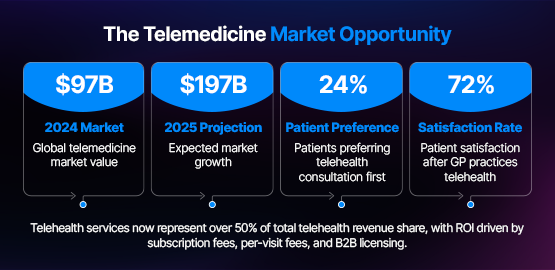
What’s more, investment in telehealth app development pays off quickly.
Telehealth services now represent over 50 percent of total telehealth revenue share. The ROI is driven by subscription fees, per-visit fees, and B2B licensing fees.
This is why telemedicine mobile app development isn’t just a “nice-to-have” anymore.
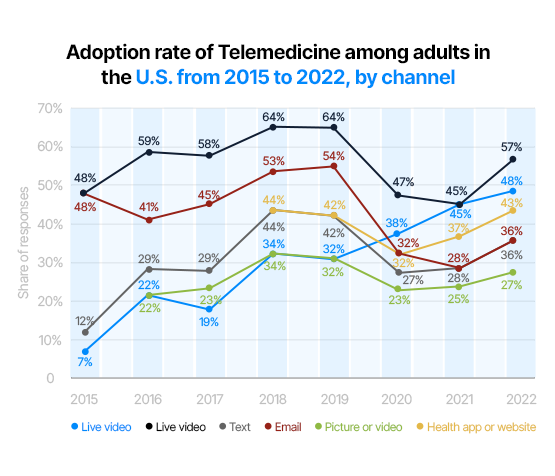
Frankly, you can’t afford to put it off anymore.
So, you’re likely wondering, “how to develop a telemedicine app?”
Before we get into the weeds, let me give you a bird’s-eye view of the journey.
We follow a proven, seven-step process for telemedicine application development.
We will cover all this in great detail in a moment.
For now, let’s tackle one big mistake we see healthcare organizations making all the time: they aren’t clear about who their telehealth application is actually for.
So you must figure out—who will be using your telemedicine app?
When you’re planning telemedicine app features, you’re really answering to four types of users:
By designing for each persona, you’ll ensure high adoption.
This clear focus also makes the work of our telemedicine app developers more efficient and effective.Of course, a good telemedicine app must solve problems. So, we need to know the key features that make telemedicine apps actually usable and enjoyable.
We’re moments away from getting into the specifics of telemedicine mobile app development. Before that, we must know the non-negotiable telemedicine app features that form the core of any great platform.
Alright, let’s roll up our sleeves and walk through the nitty-gritty of how to develop a telemedicine app.
Here’s a closer look at what happens in each phase of the telemedicine application development journey.

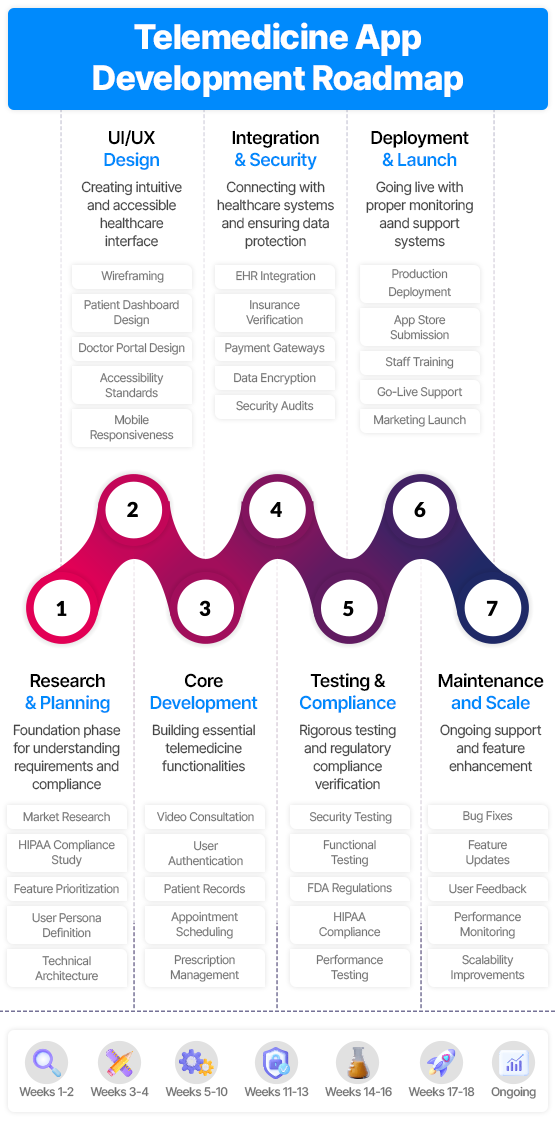
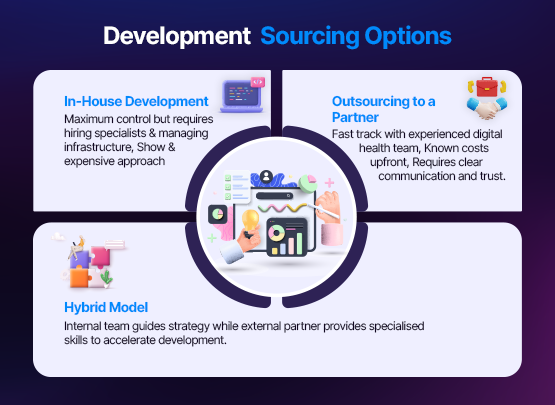
We can help you evaluate these options. Give us a call, and ask for a free consultation.
If you decide to do it in house, you need to know the tech stack of a telemedicine app.
I know the big question on your mind is about the telemedicine app cost.
The final price tag for telemedicine development really depends on the complexity you need.
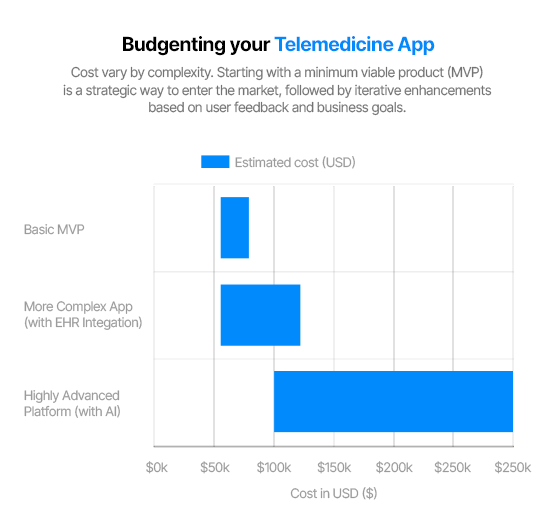
The main things that drive the cost are:
Tip: Choosing a cross-platform approach like React Native can save you up to 50% compared to building separate native apps.
We’ll work with you to define a clear scope that meets your budget and delivers a strong return on your investment.
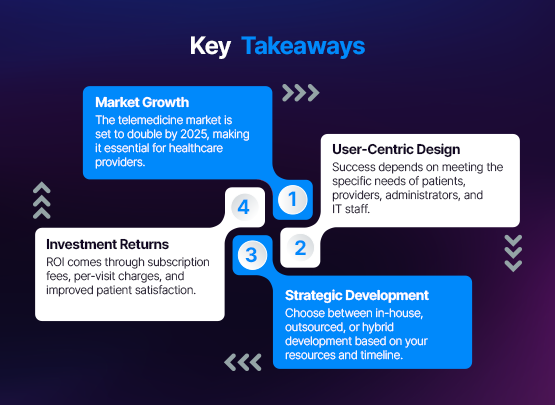
Hands down, Teladoc Health is the biggest player. Since 2002, this telemedicine app serves over 80 million users in more than 130 countries. It offers video consults, second opinions, and chronic care—all through its easy-to-use mobile app.
Absolutely! The global app market is booming—expected to hit over $585 billion in 2025 with 173 billion downloads. Businesses are racing to reach customers where they spend most time: their phones. So, app development skills remain super hot, especially in healthcare tech.
Telemedicine means healthcare delivered remotely via apps and video. While not all telemedicine is AI, AI is becoming a big part of it—think smart chatbots, image analysis, and predicting health risks. AI makes telemedicine smarter but doesn’t replace core features like video calls and e-prescriptions.
Also called mHealth, it’s healthcare on your phone or tablet—like video consults, secure messaging, remote monitoring, and syncing with health records. It’s way more than just video calls.
Skype isn’t built for healthcare. It doesn’t meet HIPAA or encryption standards, so patient data isn’t safe. A dedicated telemedicine app keeps everything secure and compliant—protecting both patients and your practice.
Let Neuronimbus chart your course to a higher growth trajectory. Drop us a line, we'll get the conversation started.
Your Next Big Idea or Transforming Your Brand Digitally
Let’s talk about how we can make it happen.